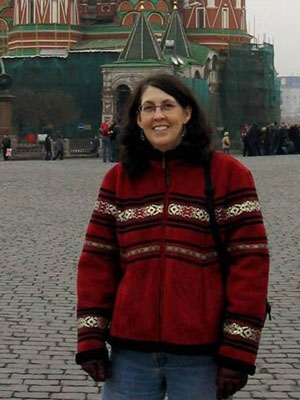Pat Manley
Professor Emeritus

Pat Manley received her doctorate from Lamont-Doherty Earth Observatory of Columbia University in Marine Geology and Geophysics. She began teaching at Middlebury College in the Fall of 1989. Pat teaches courses from introductory geology courses (Ocean Floor, Dynamic Earth, Earthquakes & Volcanoes) and as well as upper division courses in Geophysics, Marine Geology and Sedimentology. She routinely involves students in her research on Lake Champlain sediments as well as Holocene paleoclimate research in the North Atlantic and along the bays and fjords of Antarctica.
Courses Taught
GEOL 0500
Readings And Research
Course Description
Readings and Research
Individual or group independent study, laboratory or field research projects, readings and discussion of timely topics in earth and environmental science. (Approval only)
Terms Taught
GEOL 0700
Senior Thesis Research
Course Description
Upon completion of GEOL 0400, all senior geology majors will continue their independent senior thesis research by taking one unit of GEOL 0700. This research will culminate in a written thesis which must be orally defended. (Approval only)
Terms Taught
Publications
- Manley, P.L., T.O. Manley, K. Hayo and T.M. Cronin, (2011) Small-scale Lacustrine Drifts in Lake Champlain, Vermont, Journal of Great Lakes Research. doi:10.1016/j.jglr.2011.05.004
- Manley, P.L. and T.O. Manley, In a Slump, 2009, Professional Surveyors Magazine, 29: 18-20
- Michalchuk, B., J.B. Anderson, J.S. Wellner, P.L. Manley, W. Majewski, and S. Bohaty, 2009, Holocene climate and glacial history of the northeastern Antarctic Peninsula: The marine sedimentary record from a long SHALDRIL core, Quaternary Science Reviews, DOI: 10.1016/j.quascirev.2009.08.012
- Cronin, T.M., P. L. Manley, S. Brachfeld, T. O. Manley, D. A. Willard, J.P. Guilbault, J. A. Rayburn, R. Thunell, and M. Berke, 2008, Impacts of post-glacial lacustrine drainage events and revised chronology of the Champlain Sea episode 13-9 ka, Palaeogeography, Palaeoclimatology, Palaeoecology, 262, p. 46-60.
